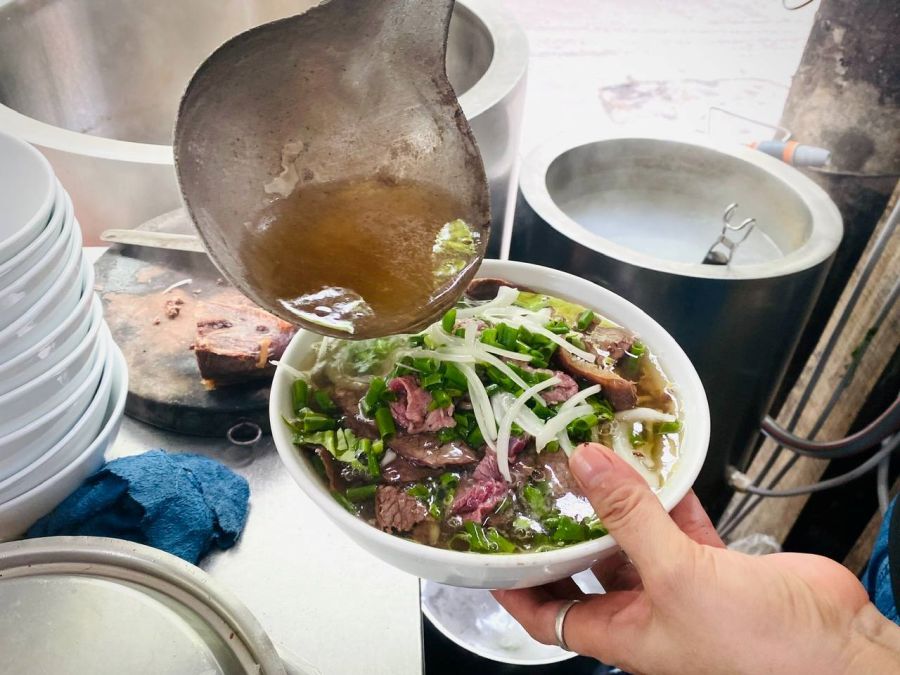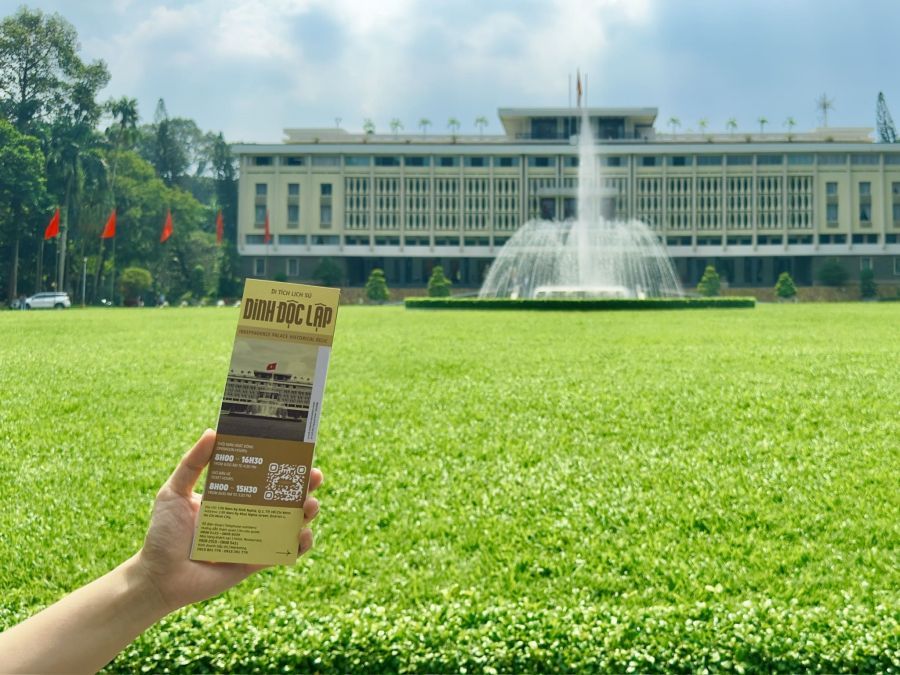Explore Vietnam in February with Ideal Weather and Culture
You can see Vietnam bursting with color in February. The air smells different, and Vietnam is filled with a peaceful anticipation for the new year. You’ll find travel tips, weather insights, and places worth seeing in Vietnam in February below.
Table of Contents
ToggleIs February A Good Time To Visit Vietnam?
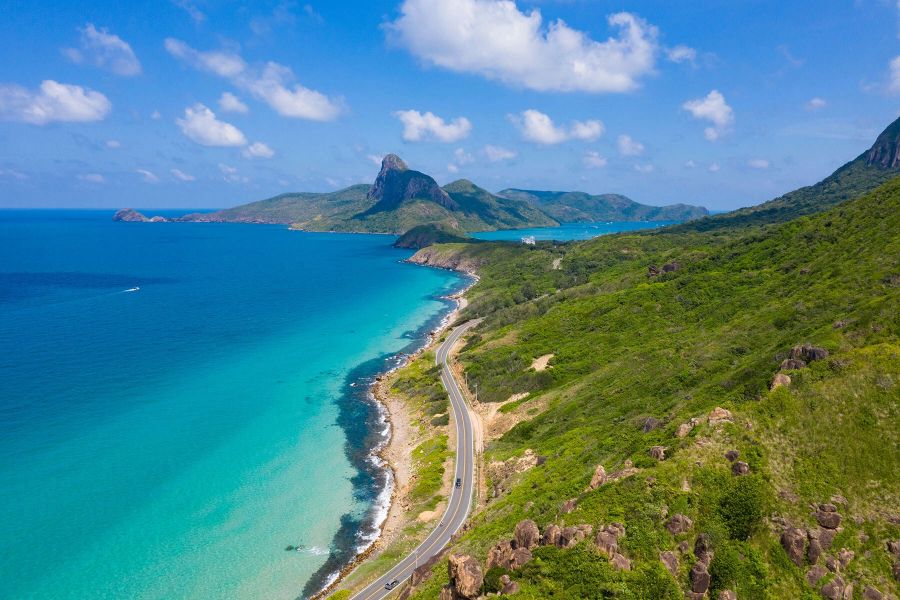
Vietnam in February is one of the most comfortable times to explore the country. Across the country, the weather is calm and predictable: dry skies, light breezes, and temperatures that don’t swing too far in any direction. Travelers can also experience the tail end of Tet, the Lunar New Year, which has usually passed or is winding down.
February usually brings great weather for getting around. Most places stay dry and pleasantly cool, which makes outdoor activities and sightseeing easy to enjoy. The south is warm and sunny, perfect for beaches like Phu Quoc, Con Dao, or the Mekong Delta. Early in the month, you’ll still catch the festive energy with streets decorated and temples busy.
That said, late February in the north can get a bit sticky with “nom”, a damp weather pattern that makes things feel humid inside. Travel can be busier than usual, and prices may rise a bit during the holiday season.
What’s The Weather Like In Vietnam In February?
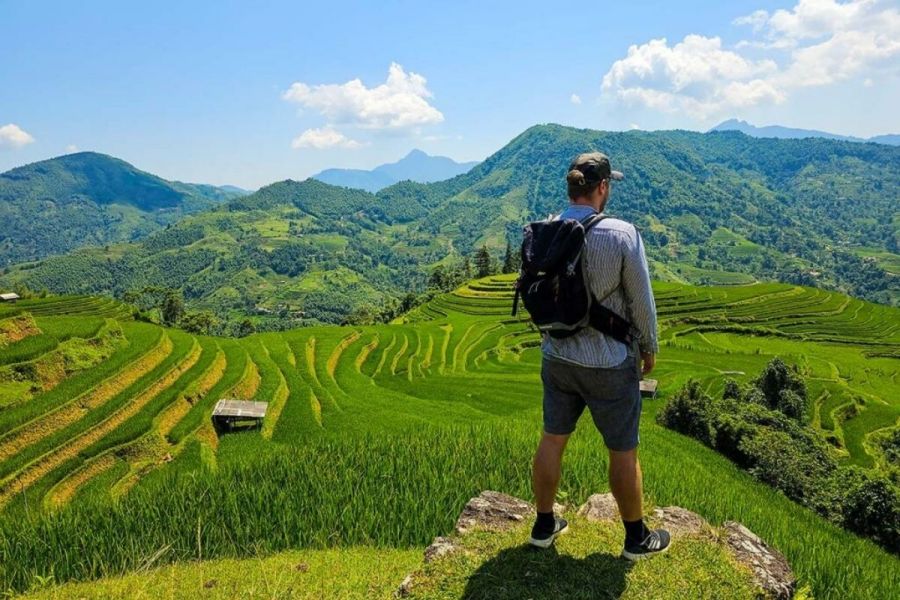
Vietnam in February offers a refreshing balance of climates across different regions. It’s not too hot, not too cold, and there’s very little rain. Still, the weather feels different in each region, so it’s worth knowing what to expect before you go.
Northern Vietnam In February
February in the north is cool and cloudy. Temperatures in Hanoi and nearby cities range from 15 to 20°C. It doesn’t rain much, but the air feels moist, especially later in the month. That’s when the “nồm” weather begins, walls sweat, floors stay damp, and everything feels a bit sticky indoors. In the highlands like Sapa or Ha Giang, mornings and nights are colder, sometimes dropping below 10°C. That said, Vietnam in February still offers excellent conditions for trekking in these mountainous regions, just bring your layers.
Central Vietnam In February
The central region enjoys some of its best weather in February. Cities like Hue, Da Nang, and Hoi An see mild temperatures, often between 21 and 26°C. Hue, north of the Hai Van Pass, can still feel a bit cool and cloudy early in the month, while Da Nang and Hoi An tend to warm up faster with more sunshine as the days go by. Further inland, the Central Highlands, places like Da Lat and Kon Tum, stay dry but much colder, especially at night.
Southern Vietnam In February
Southern Vietnam in February is at its peak. Places like Ho Chi Minh City, Can Tho, and Phu Quoc stay warm and sunny. Cities like Ho Chi Minh City, Can Tho, and Phu Quoc stay warm, with temperatures between 28 and 33°C. Rain is rare, and the air feels less humid than usual. It’s perfect for boat trips in the Mekong Delta or long days by the sea. Pack light clothes, sunscreen, and stay hydrated—you’ll be outdoors a lot.
Best Places To Visit In Vietnam In February
By February, the weather has settled, and the Tet crowds have mostly gone home. It’s a good time to head south for the sun or catch the early blossoms in the north before the spring haze arrives. Below are specific places worth going this month, based on weather and local experience.
Hanoi
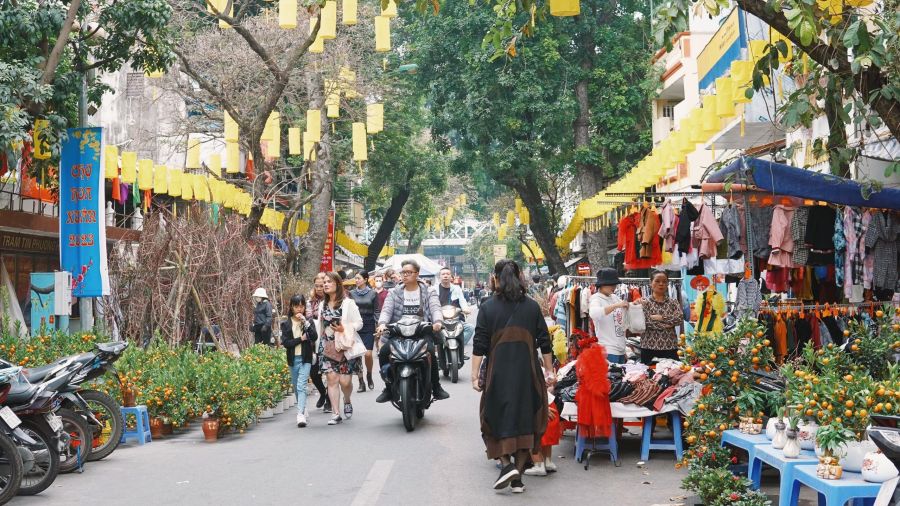
The weather in Hanoi in February is cool and dry, and daytime temperature often stays between 15°C and 20°C. With most travelers here for Tet, it’s the perfect moment to discover Hanoi’s beautiful historical spots and participate in the festive celebrations afterward. Peach blossoms and kumquat trees along the city’s streets add color and cheer to the streets. The air in the capital is full of New Year festivity in February, but it’s not yet as crowded as during peak season.
Sapa
At this time of year, Sapa in the north is a sight to see, with hills covered in blooming peach and plum trees. Easy trails and warm encounters with communities are possible because the cooler temperatures are between 10°C and 18°C. You’ll love the mountain scenery and explore the unique terraced rice paddies during this season.
Ninh Binh

It takes little time to reach Ninh Bình from Hanoi, as you’ll then find a peaceful place rich in history and nature. The early months of the lunar calendar, such as February, are when you’ll often find Bai Dinh Pagoda busy with large ceremonies and visitors. It is cool and dry right now, making travelling through Tam Coc and Trang An on the river a pleasurable experience. Ninh Binh becomes more special because of the local festivals, which give depth to your February visit.
Hue
In February, Hue, the old capital, usually enjoys light and warm weather, and temperatures are around 20°C to 28°C. You’ll find fewer crowds touring the ancient citadel, royal tombs and pagodas this time of year. The views along the Perfume River and nearby areas are especially lovely right now. With its quiet and clear skies, Hue feels like a pleasant stop to make during any trip to Vietnam in February.
Da Nang
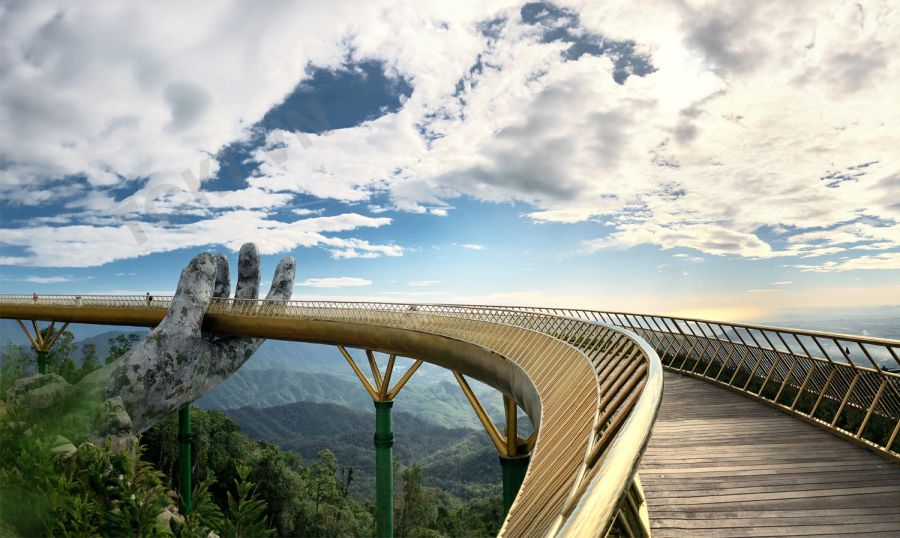
Central Vietnam’s attractions are accessible from Da Nang which also features wonderful beaches and modern facilities. Just a short distance away, Ba Na Hills has a French village, the Golden Bridge, and excellent views. Having good weather in February makes spending time at these sites even more fun.
Ho Chi Minh City
February in the south is a dry month, with it usually ranging between 25°C and 35°C in temperature. Ho Chi Minh City is full of energy, surrounded by old sites, busy markets, and lively nightspots. Now is a great chance to tour the many neighborhoods and sample different kinds of local food. Visitors to Vietnam during February can find heat and fun in the south.
Phu Quoc Island
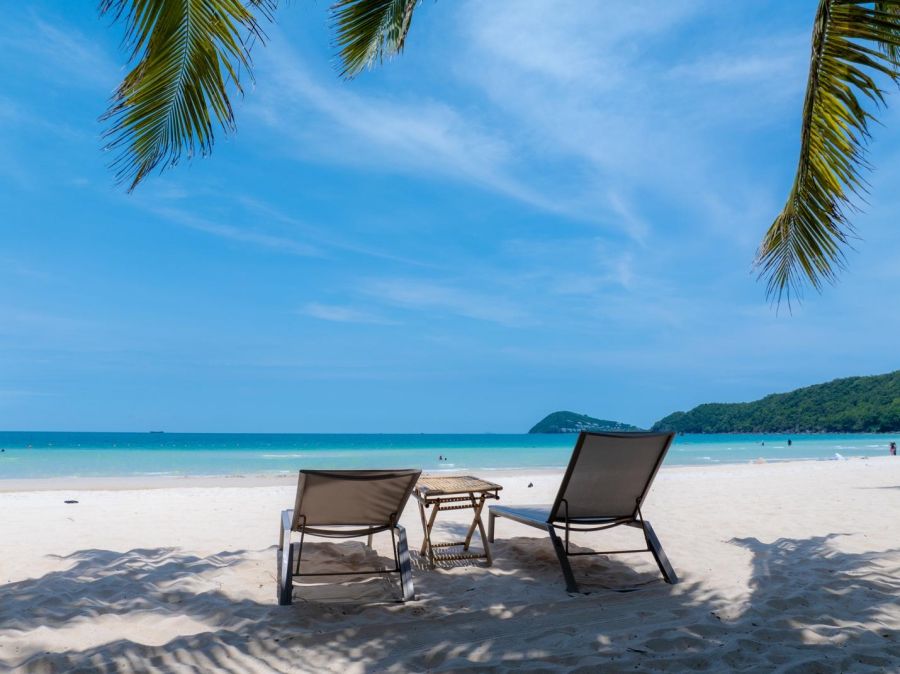
The largest island in Vietnam, Phu Quoc, is a tropical wonder in February. Because it’s warm and almost free of rain at this time, you can relax at the beach, go snorkeling, and easily explore the place. Because of the good weather, the island is great for enjoying outdoor activities and resort time this season. For most visitors to Vietnam in February, this is a great place to find peace and rest.
What To Pack for Vietnam In February
Temperatures stay moderate in most places, but the north can still get cold and humid. Packing the right layers and a few region-specific items will make your trip more comfortable.
Clothing
For the north, you’ll need a light jacket or sweater, especially in the early morning or evening. If you plan to go further up to places like Sapa or Ha Giang, bring a thicker layer, as temperatures can drop below 10°C at night. In the center and south of the country, the weather is warm, so you’ll be comfortable in T-shirts, shorts, and light pants.
Beach essentials
If you’re heading to the coast or islands, don’t forget swimwear, flip-flops, and sunscreen. Strong sun makes the south even hotter; a sun hat and sunglasses will be useful. If you have either a quick-dry towel or a sarong, you’ll find it useful for days out on a boat, beaches, or near water.
Health & Medications
Mosquito repellent is useful, particularly in the southern parts of Vietnam in February, where warm weather and water sources attract bugs. Bring basic medicine like cold tablets, painkillers, and something for digestion. After Tết, food routines shift, and stomach issues happen more often. If you rely on any prescription meds, bring enough for your whole trip. Some pharmacies may open late after the holiday.
Other useful items
Mountain weather can change quickly, so pack a light rain jacket or a foldable umbrella. In the north, late February often feels damp indoors, so moisture-wicking socks or soft slippers will make your stay more comfortable. It’s also smart to bring a few wet wipes or tissues, as some public restrooms may still be understocked after the holiday.
Travel Tips For Visiting Vietnam In February
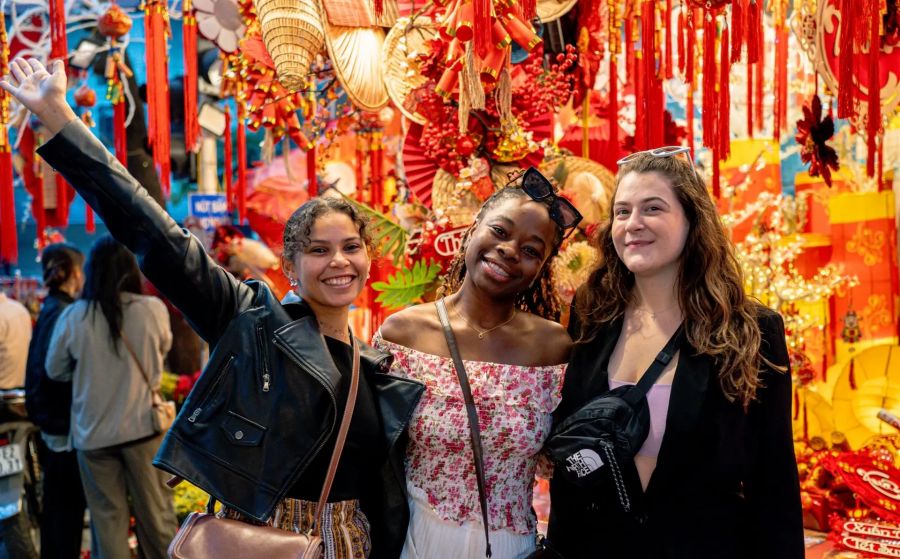
Things are calmer after the New Year, but some habits of the holiday season linger. If you’re traveling to Vietnam in February, a few small adjustments can make the trip a lot smoother.
- Check the Tet dates: Tet holiday usually falls in late January or early February. If your trip overlaps with the holiday, expect changes in schedules and availability. Trains, buses, and flights may book out early, especially on routes between major cities.
- Be prepared for fog in the north: If you’re going to places like Sapa, Ha Giang, or even Hanoi in the early morning or evening, thick fog can affect visibility. It’s not dangerous, but it can delay travel or block your mountain views.
- Book transport and hotels in advance: Local travel isn’t finished once the main holiday ends. In busy destinations such as Sapa, Da Lat, and Phu Quoc, prices will likely be high even through early February. Planning your trip earlier means you won’t have to worry about things at the last moment.
- Expect domestic crowds in tourist hotspots: At this time, it’s common for Ninh Binh, Da Lat, and Ba Na Hills to be more crowded on the weekend. After Tet, many Vietnamese take short trips as a family. It’s best to go in the morning or find a less crowded attraction nearby.
Final Thoughts: Why February Is a Great Month to Explore Vietnam
You don’t need perfect timing to enjoy Vietnam, but February makes things easier. The great weather, open roads, and a calm but active spirit after the holiday make it delightful. It’s a practical and pleasant month to see the country. There is plenty to do in Vietnam during February, and Seni World will help you decide what works for you.








